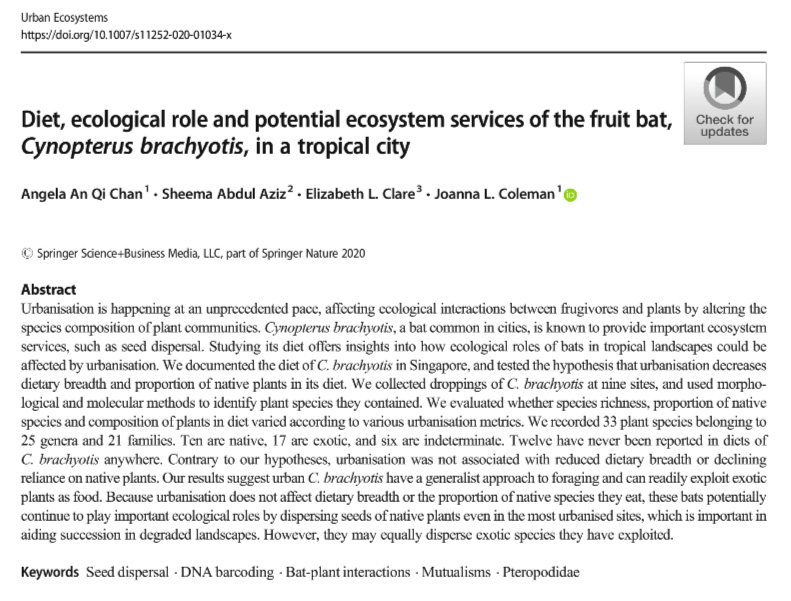Of Singapore’s 20+ bat species, perhaps none epitomises the urban denizen better than the dog-faced fruit bat (Cynopterus brachyotis). You can find this bat almost everywhere on the urbanisation gradient, and this bat seems to have adapted well to city life (notwithstanding the apparent genetic impacts of urbanisation) – including by adopting the behaviour of commensal roosting (using anthropogenic structures, such as buildings, as roosts) – which is in and of itself a bit unusual given that elsewhere, it pretty much just roosts in foliage (hanging directly from leaves & branches or chewing certain types of leaves to make them into tents).
My student, Angela CHAN, spent several months collecting bat droppings (feces, dropped food items and the stuff they spit out) and then used a combination of microscopy, seed germination and (most importantly) molecular methods (DNA sequencing) to identify which plant species these bats are eating. In this first systematic study of fruit-bat diets on an urbanisation gradient anywhere, we discovered 33 species of plants, including some this bat has never been reported to eat. And while the urbanisation gradient itself did not affect bat diets as we predicted, bats in different sites were certainly eating different things.
Although we could not conclusively show that they provide ecosystem services (that would require further study), we report the potential services (such as propagating native heritage plants and aiding succession in degraded and fragmented urban landscapes) and disservices (such as propagating introduced, invasive plants) that these bats provide as they spread seeds.
Beyond those outcomes, this was one of the most personally gratifying projects in my lab. After all, the authorship involves four female researchers (I’m all about women in STEM) of four different cultural/ethnic backgrounds and three nationalities (win for diversity!) and a partnership with Wildlife Reserves Singapore, whose Conservation Fund supports researchers as we work to protect wild places and species. This being the first publication by one of my honours students is also an exciting milestone.
Check out the paper here.

